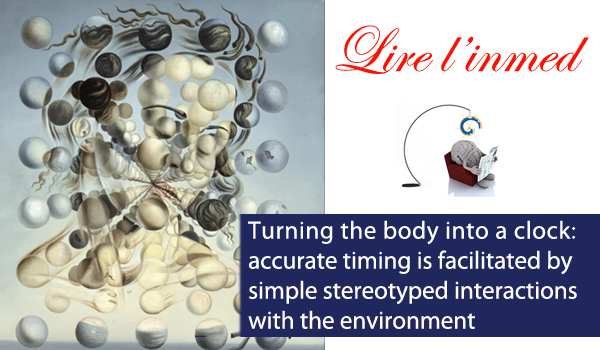Our fourth dimension. We, humans, are made of flesh and bones… that’s understood. Yet, some of our cognitive abilities remain strangely disembodied for us. One of them is our representation of time. Here, the authors show that rats, like humans, increase their accuracy in evaluating the passing time if they accomplish a motor routine. Hence, rats on a treadmill will wait that their body gets in contact with the back-stop to initiate their final run which will lead them timely – they learned it- to the reward placed at the front. Thus, time is us, interacting with the environment. (Ingrid Bureau)
Authors: Safaie M, Jurado-Parras MT, Sarno S, Louis J, Karoutchi C, Petit LF, Pasquet MO, Eloy C & Robbe D
Scientific abstract: How animals adapt their behavior according to regular time intervals between events is not well understood, especially when intervals last several seconds. One possibility is that animals use disembodied internal neuronal representations of time to decide when to initiate a given action at the end of an interval. However, animals rarely remain immobile during time intervals but tend to perform stereotyped behaviors, raising the possibility that motor routines improve timing accuracy. To test this possibility, we used a task in which rats, freely moving on a motorized treadmill, could obtain a reward if they approached it after a fixed interval. Most animals took advantage of the treadmill length and its moving direction to develop, by trial-and-error, the same motor routine whose execution resulted in the precise timing of their reward approaches. Noticeably, when proficient animals did not follow this routine, their temporal accuracy decreased. Then, na¨ıve animals were trained in modified versions of the task designed to prevent the development of this routine. Compared to rats trained in the first protocol, these animals didn’t reach a comparable level of timing accuracy. Altogether, our results indicate that timing accuracy in rats is improved when the environment affords cues that animals can incorporate into motor routines.
Published in PNAS, May 2020

